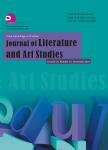
T=题名(书名、题名),A=作者(责任者),K=主题词,P=出版物名称,PU=出版社名称,O=机构(作者单位、学位授予单位、专利申请人),L=中图分类号,C=学科分类号,U=全部字段,Y=年(出版发行年、学位年度、标准发布年)
AND代表“并且”;OR代表“或者”;NOT代表“不包含”;(注意必须大写,运算符两边需空一格)
范例一:(K=图书馆学 OR K=情报学) AND A=范并思 AND Y=1982-2016
范例二:P=计算机应用与软件 AND (U=C++ OR U=Basic) NOT K=Visual AND Y=2011-2016

摘要:The concept of word classes (parts of speech) has always generated controversy among linguists. The earlier Prescriptive and Descriptive Schools might have set the pace for this controversy but the present dilemma is much deeper. Learners and even teachers are sometimes at quandary as to how to proof that a particular word belongs to a particular class. This is because a word may sometimes belong to several classes, in context as in the word "watch" which can belong to different classes. This paper therefore tries to provide answers to the problem of word class classification by using a morphological and syntactical evidence to prove that English words follow a particular range of inflections and belong to strictly ordered particular categories and do not change their class arbitrarily. This is in line with the natural perfect order of homogeneity in creation which precludes a specie from merging effectively with another specie without having to undergo some fundamental changes. Other variables were also looked into and it was concluded that teachers and learners as well, can rely on this sub-categorization approach as a reliable paradigm for their assumptions concerning word classes.
地址:宁波市钱湖南路8号浙江万里学院(315100)
Tel:0574-88222222
招生:0574-88222065 88222066
Email:yzb@zwu.edu.cn

